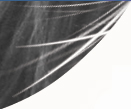HELP NOT HINDER – Part 6 – Weight is great
“Weight is great, might is right” said Sid Coran softly, as he gave a glancing blow with our horse lorry to yet another sign post on a tight Cornish corner. Sid was not at all aggressive as a driver, just not very competent, and so fond of the ponies in the back that sharp braking was not an option. So it was fingers crossed and ‘weight is great’! The weight of some riders is also somewhat out of control and often unhelpful to their horses.
STEP ONE TAKE ONE CHILD
When did you last have a piggy-back or shoulder back ride? Or better still when did you last GIVE a piggy-back or shoulder back ride, or get down on all fours and be a horse for a child? In all seriousness this is a very useful exercise to help us work out various questions about the use of the rider’s weight as an aid (and a help) to the horse.
The only thing that coaches seem to agree on is that constantly changing how your weight acts to any major degree is definitely unhelpful. Despite this it is common to see many jumping riders throwing their weight around and many dressage riders lurching…what a wonderful word…about during transitions and changes of direction. Do not do this! It does not make you an easier load for our long suffering horses.
SIDE TO SIDE
There are three main reasons for putting your weight to the inside going round a circle or part of a circle:
1 – There is no doubt that our weight should go with the direction of movement. If not controlled your weight and the saddle tends to slip to the outside of a circle, so to stay balanced most of us need to be aware of this and consciously keep sufficient weight on the inside seat bone and iron. 2 - The faster a horse goes round a corner the greater the need is for them to lean in a little and for the rider to stay in the same alignment. 3 - A horse will quickly catch on to turning as you change your weight to the inside.
The problem is that too many overdo this. It is only necessary to press down a little on one iron to achieve what is required. Get the child on your back to lean to one side….to begin with you go with this movement but if it is overdone you have to try to lean in the opposite direction and tighten up to maintain your balance, which is exactly what happens with a horse. This is often seen in a turn back against the clock in show jumping when the horse ends up having to tense up to stay on their feet and lose their power off the ground for the fence off the turn.
In addition in all the working paces a well engaged and balanced horse stays vertical around a corner and moving your weight more than a fraction will actually hinder your horse’s ability to stay connected and supple. I was recently reading an article which said that if you move your seat just one inch to the side you are moving 40% of your weight from one side to the other…suffice it to say that many of us could be a little more careful about how we move and use our weight.
FORWARDS AND BACK
In relation to putting your weight forwards or back I have heard many times that a horse is like a playground see-saw and you can use your weight to influence your horse in the same way, but this is far from the truth. A horse does not have a fulcrum like a sea-saw, is not a solid unbending structure like a sea-saw and is not stationary like a sea-saw.
The one general rule is to keep your own centre of gravity over the horse’s centre of gravity as far as possible. This is why it is easier to carry a child on your shoulders rather than piggy-back because it is easier to keep the child’s C of G over yours like this. The same applies if you are giving a child a ride with you on all fours. If they put most of their weight forward it is difficult to move the front legs of the ground with ease (although the back end is more free to move) and if most of the weight goes backwards it prevents the hind legs from engaging and pushing, but with the two centres of gravitiy in alignment some athleticism is possible. So if you want your horse to perform you need to be aware of where these centres of gravity are.
CENTRE OF MASS
Obviously each rider and horse is slightly different but generally speaking the following is true. The rider’s centre of mass is approximately level with the belly button, while the horse’s centre of mass is approximately along the line of the girth, obviously in the centre of the horse but approx level with the normal position of your knees in a jumping saddle. As the horse becomes more advanced the centre of mass will move slightly further back.
Therefore you can immediately see why it is easier for the horse if we are doing sitting trot in a dressage saddle rather than a jumping saddle because the centre of a dressage saddle is further forward than a jumping saddle and closer to the horse’s centre of mass, but still the horse needs to have a slightly ‘uphill’ balance to cope easily. It also shows why a light seat is the easiest option for a jumping horse, because with a light seat the two centres of mass are in alignment.
THE CHICKEN SHED BALANCE
Many trainers talk about balancing a horse through the rein. So for a moment just imagine you are the horse and there is a bit in your mouth and you stumble a little and lose balance. If you rider pulls hard on the rein at that moment is it going to be a help or a hindrance? It is very tempting to try and balance the horse by increasing the rein contact, but at best it will just reduce the speed and at worst it will actually prevent an improved balance. Slowing down will produce a better balance, but staying at the same speed and increasing the pressure on the rein cannot by itself change the balance.
To understand this better imagine you are sitting on top of a rickety chicken shed that is falling. In this situation pulling strenuously on one side would make no difference to the movement of the falling shed and the same applies to horse riding. It is the horse that carries the rider and not the other way round, so no amount of pulling on the rein will actually do anything but change the direction or slow the horse down.
TOO MUCH SUPPORTING AND BLOCKING
Connected to this dead end of the supporting rein is the blocking rein and the rein of opposition. I use the latter two reins for short periods in a few specific situations including emergencies, but so often this is not what is required and leads to a horse being given a hand/rein contact to lean against. For example if I am making a turn and I get too much bend in the neck I don’t block the bend with the outside hand but use rein aids with the outside hand to ask my horse to begin to bend the other way. This may sound pedantic but try it on a one sided horse who tries to lean and you will quickly feel the difference.
Connected to this is the ‘kick and pull’ recipe for a balanced horse. Yes this will often have a positive effect on a badly behaved horse in the very short term but if used regularly will so often lead to an unnatural outline, and therefore a restricted balance, and an unwilling or confused horse that learns to expect a rein restriction at the moment of being asked to go forwards. It is so easy for this style of riding to become a habit, particularly in cross country riding, and in my opinion it distracts and restricts the horse from taking responsibility for the fence they are about to jump. Therefore it increases the risk.
A STILL LOAD IS A LIGHT LOAD
So weight is great if it is under control and moves in harmony with your horse both on the flat and when jumping. A still load is a light load and a load that will help your horse perform safely and efficiently….and happily. The phrase ‘a still load’ can be misunderstood. The contradiction is that a still load has to move with the movement of the horse….in harmony. So your weight and your seat moves with your horse. When this is achieved it is possible to influence the horse through the seat to do everything …. going forwards, slowing down and turning….but unfortunately nothing is more of a hindrance to a dressage horse than a seat that restricts and squashes the back…so an allowing hands and clear leg and rein aids first please. Then you will have help full happy days. William
STILL TO COME….an aid system and the strange case of the Olympic dressage horse who could only be ridden by one rider; and the emergency stop …that I apologise for not fitting in this time!
[ back to Articles ]
|


